Weigela "Nana Purpurea": description, cultivation and reproduction

The ornamental deciduous shrub weigela is prized in gardening circles for its unusual appearance and unpretentious care. The variety "Nana Purpurea", distinguished by its red-brown foliage, can boast of a special aesthetics. In order for the bush to decorate the site as long as possible, one should correctly approach its conditions of detention.
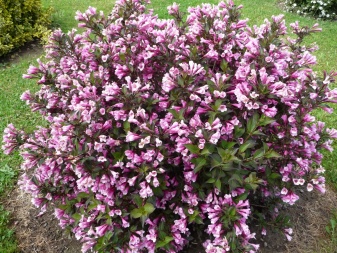
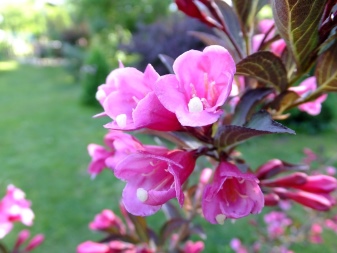
Description
In nature, the plant can grow in the Primorsky Territory of our country, in the north of China and in Japan. The presented variety is a small perennial shrub, the height of which is 70-150 cm. Under favorable conditions, the plant will be up to 2 m in size. The culture grows slowly, but it has a beautiful neat rounded crown. The annual growth is 15 cm.
The leaves are oval and have short petioles, the color of the foliage is purple, turning green throughout the season. That's why the plant has a decorative appearance at any time of the year. Flowering is a dissolution of dark pink tubular flowers with a yellow center. In length, the flowers reach 5 cm, in diameter - 2-5 cm. One inflorescence has 3-5 flowers.
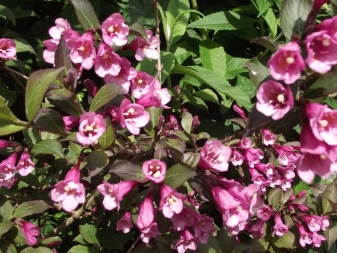
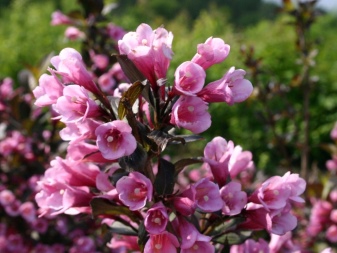
Flowering begins in late May or early June and continues until the end of the next month. In autumn, it is possible to observe the second wave. This representative of the flora is considered a good honey plant and therefore often attracts pollinating insects. The frost resistance indicators of the variety are average, which means that when grown in the middle lane it is necessary to insulate it for the winter.
Both flowers and green mass have decorative properties, and therefore this variety can be used for spot decoration of the lawn, for the formation of living fences.
For a special variety of colors, it is recommended to plant the variety "Nana Purpurea" next to other varieties of weigela.

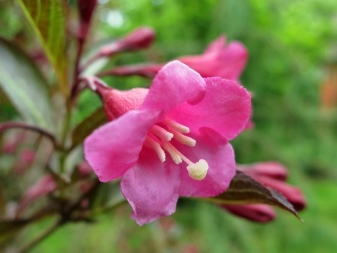
Landing
Planting is carried out in the spring, when the soil is well warmed up. Most often it is April May. A three-year-old specimen is used as a planting material. If the seedling is purchased in the fall, then it is buried in the ground in an inclined position, and sawdust, peat or humus are introduced from above.
When choosing a place for landing, give preference to sunny areas, but it is possible to plant in partial shade, for example, under a sparse crown of a tree... If the plant feels a lack of sun, then it will lose its aesthetic color and form fewer inflorescences. A place next to a fence or building is suitable, which will protect the young fragile seedling from the destructive gusts of wind.
This variety does not impose strict requirements on the soil, therefore as a substrate, you can use a mixture of humus, sand and sod land in a ratio of 2: 2: 1.
The culture will feel especially comfortable in the soil, which passes water and air well. The plant can not stand the stagnation of moisture, therefore, when planting in heavy soil, it is necessary to dilute it with coarse sand and organize a drainage system.
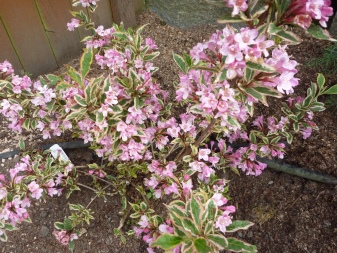
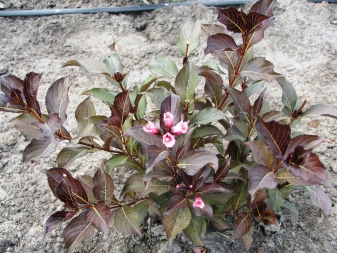
The open ground planting process is as follows.
- Dig a planting hole 60 cm deep.
- Lay a 15 cm drainage layer on the bottom, you can use gravel and sand.
- The next layer is a mixture of leafy earth, sand and compost.
- Remove the seedling from the container. Gently smooth out the root system and place in the hole so that the root collar is not buried.
- Cover the roots with soil.
- Moisten the planting site liberally.

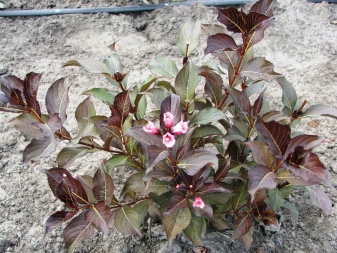
Care
Taking care of the plant is not so difficult, but you cannot start it.The health of the seedling and the beauty of the garden area depend on competent care. Cultivation consists of the following stages.
The shrub needs watering in early spring after dry weather has settled... One copy must be supplied with water in the amount of 8-10 liters. Throughout the season, the site is moistened as the soil dries out. When watering, use water that has settled during the day.

The presented variety is good for feeding. In the spring, you can fertilize the plant with a mixture of urea, potassium salt and superphosphate - this composition will allow you to recover faster after winter frosts.
The next top dressing is applied in June during the formation of buds - during this period, phosphorus-potassium mixtures should be used in a volume of 30 g per 1m2.
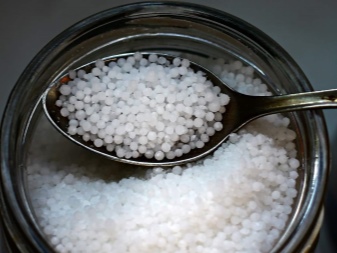
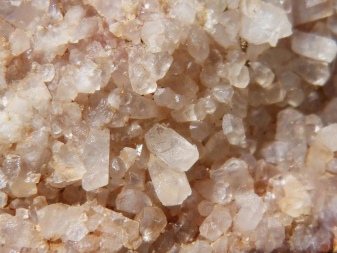
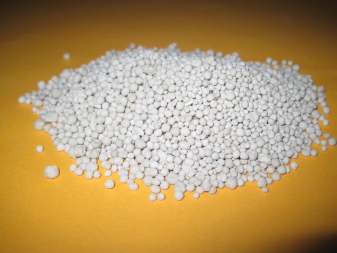
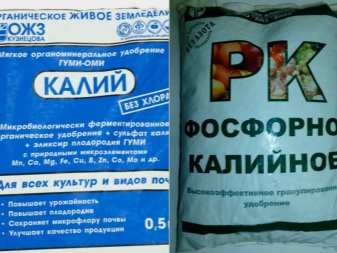
After each watering, it is advisable to loosen the soil and remove weeds. It is impossible to loosen too deeply, 8 cm is enough.To keep moisture in the soil as long as possible, and the weeds grow as little as possible, the trunk circle is mulched, sawdust with a layer of 10 cm is used as mulch.
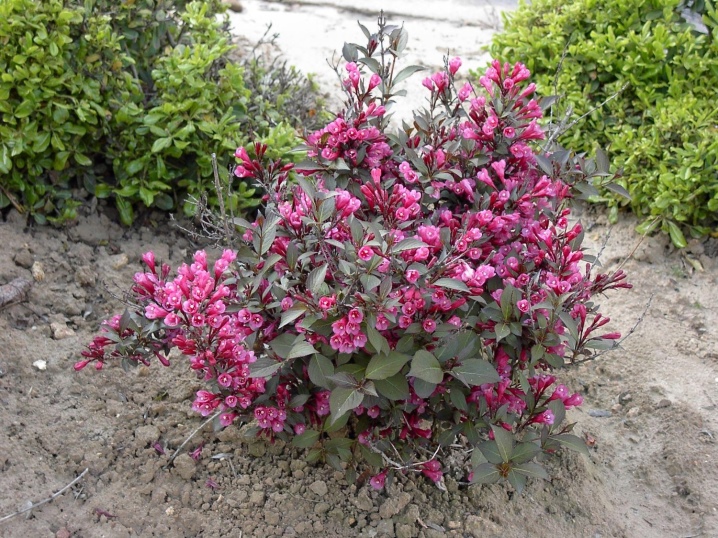
Pruning is done quite rarely - once every 2-3 years. This is due to the slow growth of the culture. Crown formation is carried out after flowering is complete. To rejuvenate the specimen, the stems that are more than 3 years old are removed, and the rest are shortened by 1/3.
Sanitary pruning is carried out every year - in the spring, in this case dry, damaged, frozen branches are eliminated.
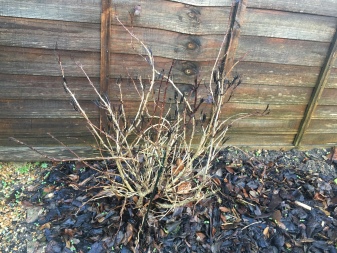
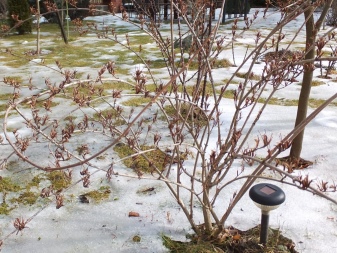
To prepare for the winter cold in the fall, the culture is watered abundantly, after which the shoots are tied and laid on the ground... It is advisable to mulch the trunk circle - a layer of mulch will protect the roots from freezing. Suitable, for example, humus or sawdust. A shelter of any non-woven material should be organized from above - it will protect the shrub until spring. Do not use polyethylene as a cover - this material does not allow moisture and air to pass through.
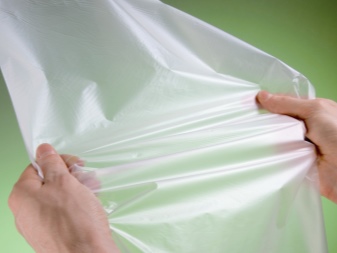

- Of the insects, weigelu is most often attacked by aphids. To cope with the problem will help drugs "Iskra" or "Karbofos". Folk remedies, for example, an infusion of garlic or ground pepper, can also provide quality protection. Sometimes the plant becomes a victim of gray rot, rust and mottling. These ailments can occur with high humidity.
Bordeaux liquid or copper oxychloride solution will help to save the specimen. Re-processing is carried out in a couple of weeks.
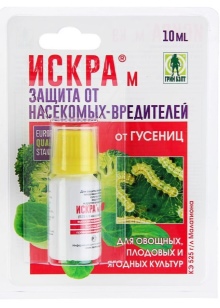
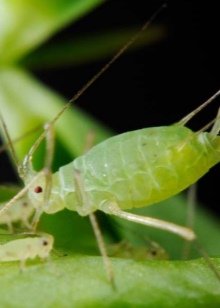
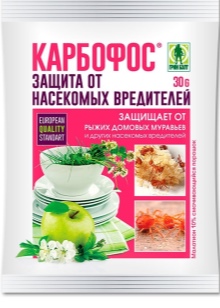
Reproduction methods
The presented variety can be propagated in several ways.
By cuttings
This is the most demanded method. Use as planting material green cuttings 10-15 cm long, which contain at least two sheets. From the selected samples, the leaf blades are cut or shortened and the shoots are left overnight in a growth stimulator in a dark and warm room. Next, the cuttings are planted in a container, covered with glass on top, and the plants are regularly watered and aired. Within a month, the roots should form, and specimens can be planted in a permanent place after 1.5 years. Flowering can only be observed in biennial plants.
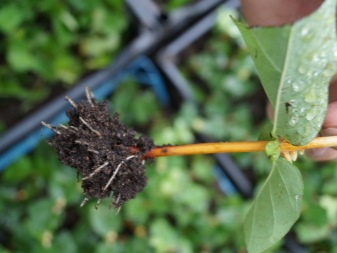
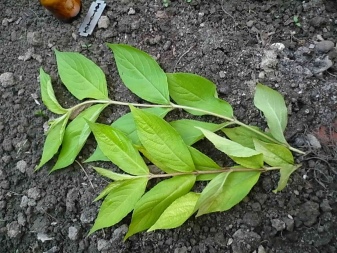
Layers
The essence of this method consists in bending one of the low shoots to the ground and strengthening it, for example, with a bracket. The place of pinning is added dropwise and the area is regularly moistened. Next spring it will be a full-fledged seedling that can be transplanted to a permanent place in 2.5-3 years.
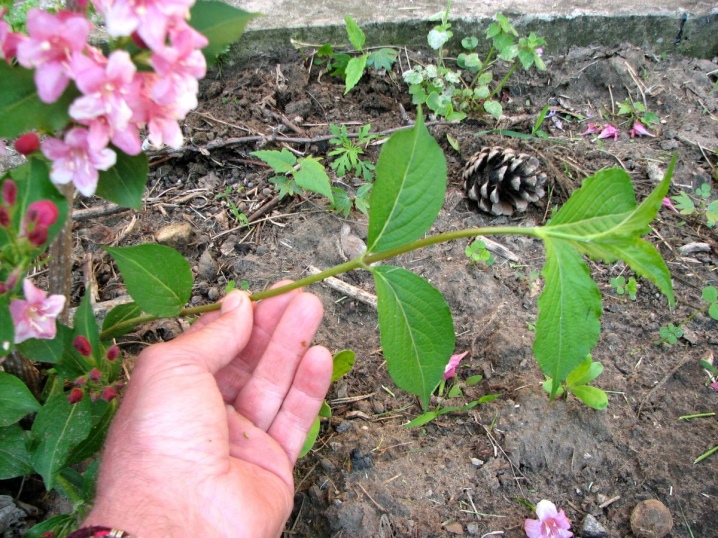
Seeds
For sowing, fresh planting material is used, since this one has the maximum germination - the longer the seeds are stored, the less prospects for a successful result. Seeds collected in the fall are dried on paper and stored in a dry, dark place until spring. Sowing is carried out in containers in shallow furrows or superficially with powder. Next, the container is covered with glass and placed in a warm room. The first shoots can be seen in 2-3 weeks.
After the formation of the second pair of leaves, the seedlings dive, and too dense plantings are thinned out.Seedlings are planted in a permanent place after 2 years.
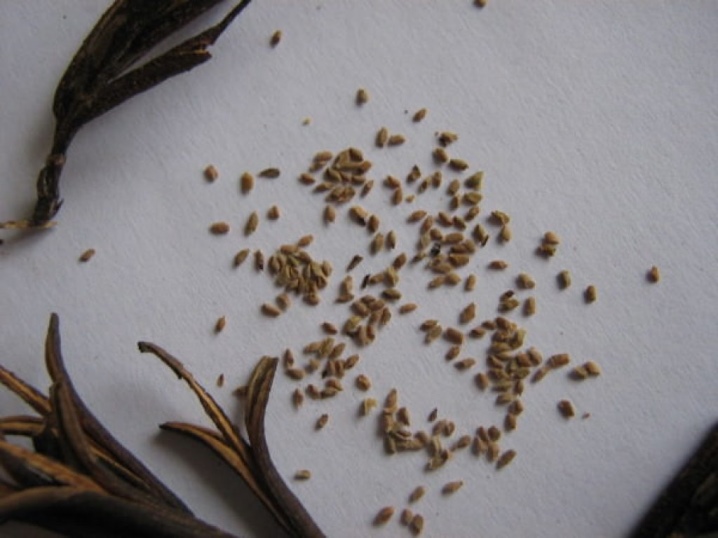
How the weigela blooms and the features of care, see below.



































































The comment was sent successfully.